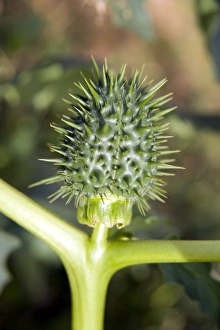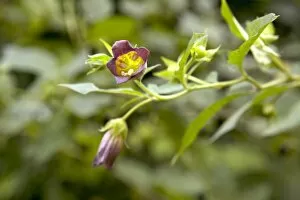Solanaceae Collection (page 5)
Solanaceae, also known as the nightshade family, is a diverse group of plants that includes some well-known and fascinating species
All Professionally Made to Order for Quick Shipping
Solanaceae, also known as the nightshade family, is a diverse group of plants that includes some well-known and fascinating species. Tab XVII showcases Mandragora officinarum, commonly known as mandrake, which has long been associated with folklore and magic due to its unique root shape resembling a human figure. Moving on to Tab XXIV, we find the Common Thorn Apple or Jimson Weed (Datura stramonium) seed pod from Europe. This plant holds both medicinal and toxic properties and has been used in traditional medicine for centuries. The Wayne County Preserving Company's American label features tomatoes, highlighting their importance in preserving food. Tomatoes belong to the Solanaceae family and have become an essential ingredient in cuisines worldwide. Intriguingly, Chinese lanterns (Physalis alkekengi) skeletons and Honesty seed pods (Lunaria annua) are showcased together. These captivating structures add beauty to gardens while serving as nature's decorations during autumn months. Piper nigrum takes center stage next; it is none other than the pepper vine responsible for our beloved black pepper seasoning found on dining tables globally. A close-up of the Blue Potato Bush's (Solanum rantonnetii) flower captures its vibrant beauty flourishing in a German garden during August. Its striking blue flowers make it a popular ornamental plant choice among gardeners. Basilius Besler's Florilegium engraving from 1613 highlights Lycopersicon esculentum - better known as tomatoes today. This depiction reminds us of how deeply ingrained this fruit has become in our culinary traditions over time. Atropa belladonna or Deadly Nightshade plant is featured here too; its dark allure conceals its highly poisonous nature when consumed without caution. Various tomato varieties are displayed side by side, showcasing the incredible diversity within this single species alone – each offering unique flavors, shapes, and colors.














